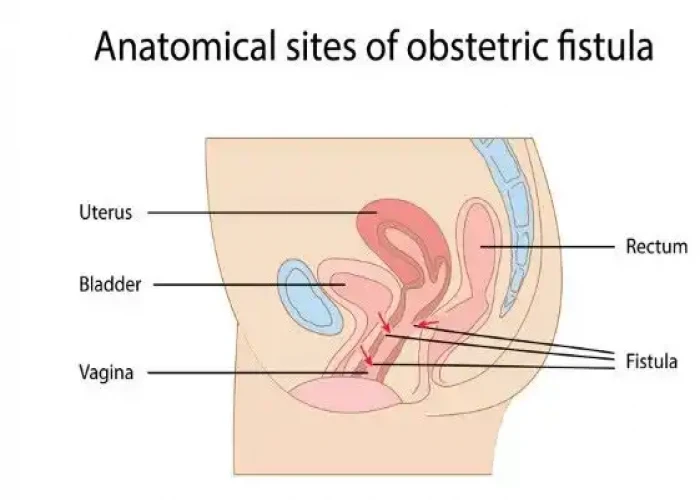 Welcome
Welcome
“May all be happy, may all be healed, may all be at peace and may no one ever suffer."
Vaginal fistula

A vaginal fistula is an abnormal opening or passageway between the vagina and other nearby organs, such as the bladder, rectum, or uterus. It can result from a variety of causes, including childbirth trauma, surgery, radiation therapy, or inflammatory bowel disease.
Symptoms of vaginal fistula can vary depending on the location of the opening and the organs involved, but can include:
- Abnormal discharge from the vagina
- Urinary incontinence
- Fecal incontinence
- Pain or discomfort during sexual intercourse
- Recurrent vaginal or urinary tract infections
Diagnosis of vaginal fistula typically involves a physical exam, medical history review, and imaging tests such as an MRI or CT scan. Treatment for vaginal fistula usually involves surgery to repair the opening or passageway and restore normal function. The specific surgical approach may depend on the size and location of the fistula, as well as the underlying cause.
In some cases, conservative treatment options such as medications, pelvic floor exercises, and wound care may be recommended to help manage symptoms and prevent infection while awaiting surgery. It is important to seek prompt medical attention if any symptoms of vaginal fistula are present to avoid complications such as infection or chronic pain.
Research Papers
Disease Signs and Symptoms
- Vaginal fistula
Disease Causes
Disease Prevents
Disease Treatments
Disease Diagnoses
Disease Allopathic Generics
Disease Ayurvedic Generics
Disease Homeopathic Generics
Disease yoga
Vaginal fistula and Learn More about Diseases

Seborrheic keratosis

Adenomyosis

Narcissistic personality disorder

Smallpox

Lupus nephritis

Henoch-Schonlein purpura

Umbilical hernia

Compulsive sexual behavior
vaginal fistula, ভ্যাজাইনাল ফিস্টুলা, যোনি ভগন্দর
To be happy, beautiful, healthy, wealthy, hale and long-lived stay with DM3S.
